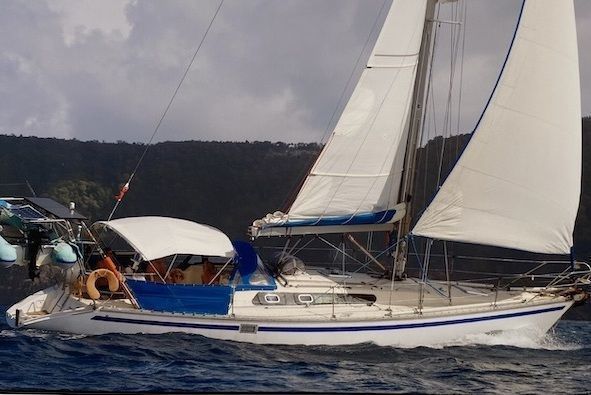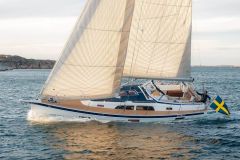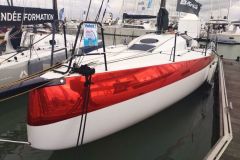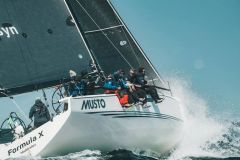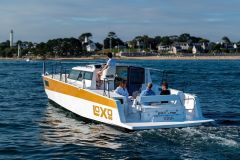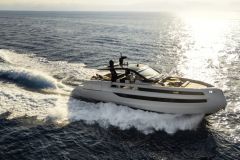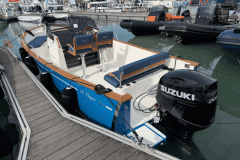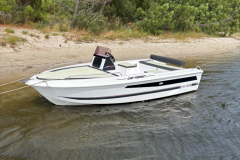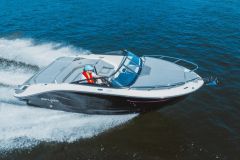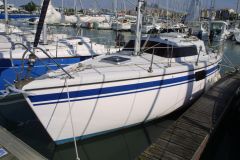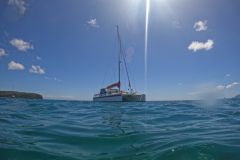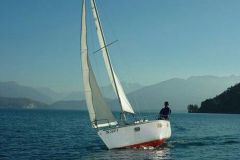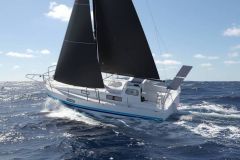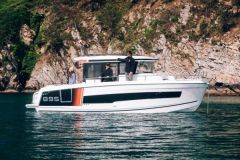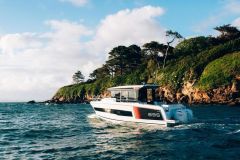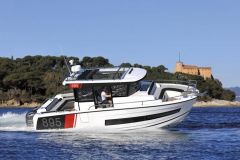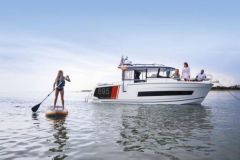A benchmark in cruising
Designed by architect Philippe Briand in the early 1980s, the Sun Fizz was produced in some 650 units over a period of fifteen years. It was offered in several keel versions (dinghy or keelboat) and rig versions (sloop or ketch). The mizzen mast was fixed in the middle of the cockpit.
The sloop keelboat version was designed for a racing-cruising program, and was able to accommodate 11 crew in regatta mode. The hull is fairly typical of the '80s, with a small transom and very good upwind performance, but a little fickle downwind.
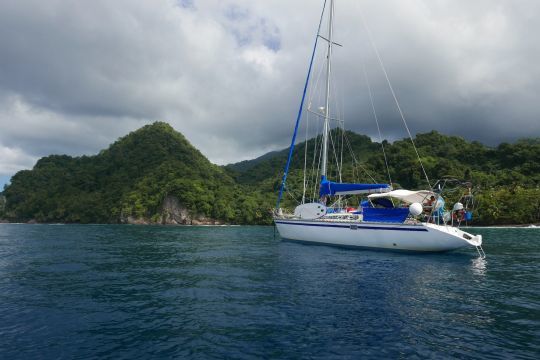
Pierre acquired his Sun Fizz in the early 2000s. One of the first models in the series, it hadn't changed much since its launch. With its classic winches, no self-tailing, orange Formica fittings and straight transom, this boat was mainly sailed in the Mediterranean. Initially, Pierre's aim was to cruise the Mediterranean basin, both solo and with his family.
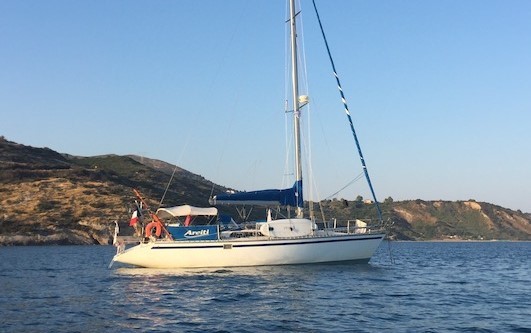
A unit optimized for ocean cruising
In two decades of sailing, Pierre has been able to upgrade his Sun Fizz to optimize the time he spends on board. It would be impossible to list all the work that has been carried out, but here are the main ones.
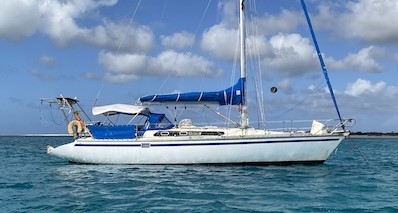
An 80 cm transom skirt has been added. This not only improves the Sun Fizz's motoring performance, but also facilitates access to the swimming area.
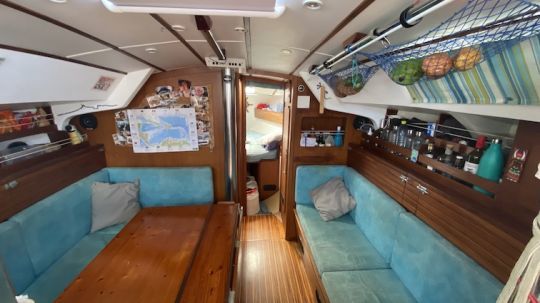
All doors have been removed to improve circulation on board. The aft shower room has been dismantled to give more volume to the aft cabin.
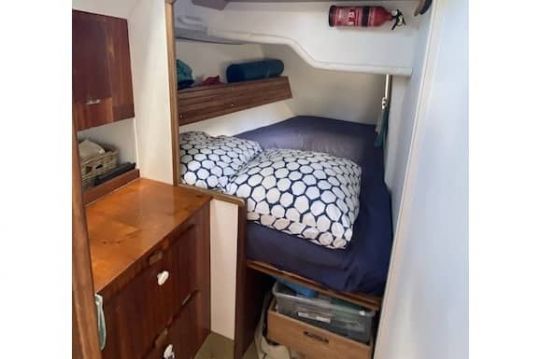
This expansion has enabled us to create a number of storage lockers, essential when you spend several months on your boat.
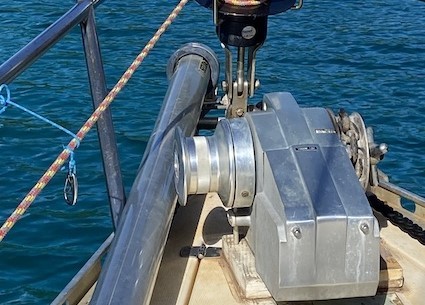
The anchor locker has been modified to accommodate a horizontal windlass, and to make it easier to raise the chain, which tended to jam. An aluminum Selden bowsprit was installed to facilitate the hoisting of downwind sails. A releasable forestay was installed, with two anchor points.

Originally, the diesel tank vent was curiously located opposite the filler neck. Pierre moved it to the same side, and added a valve to stop water ingress in heavy weather.
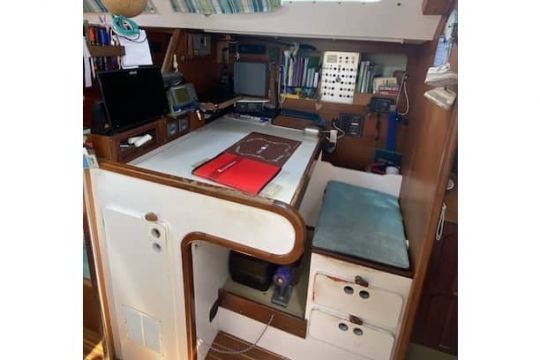
On the engine side, access hatches have been drilled to provide a visual view of all engine peripherals. In its original version, the motor lacked access for servicing. These hatches also freed up space for the installation of a water heater. A double filtration system has been installed to allow the use of low-quality diesel fuel, which can be found in certain sailing areas.
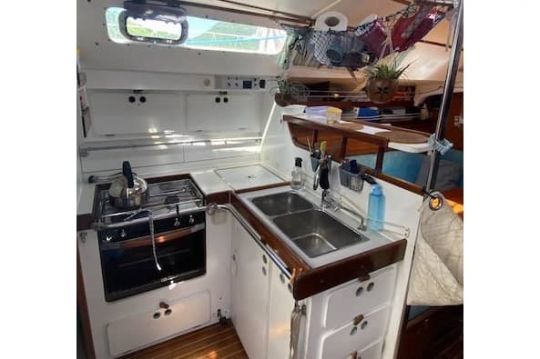
Electricity on board is provided by a Watt and Sea hydrogenerator and 300 watts of solar panels. The hydrogenerator is very efficient, but does not cohabit well with the sargassum, which is abundant in the West Indies.
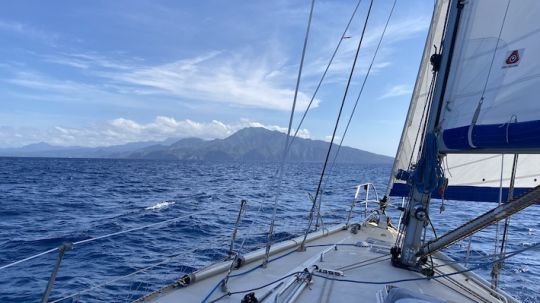
The freshwater tank has been removed and replaced by canisters with a total capacity of 110 liters. To protect them from bacteria, they are fed solely by the on-board watermaker, which produces 50 liters per hour.
The Atlantic as a playground
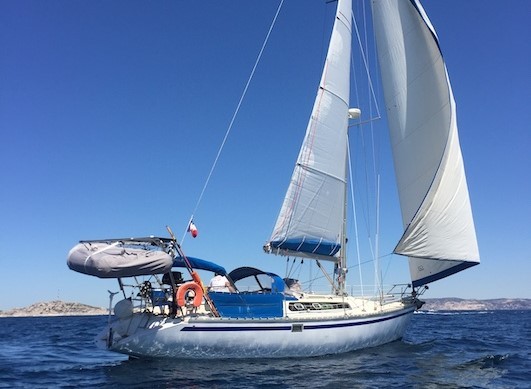
After fifteen years of cruising the Mediterranean, Pierre has extended his cruising area. In 2019, he will sail around the Atlantic via the Canaries, then the West Indies, before returning to Marseille.
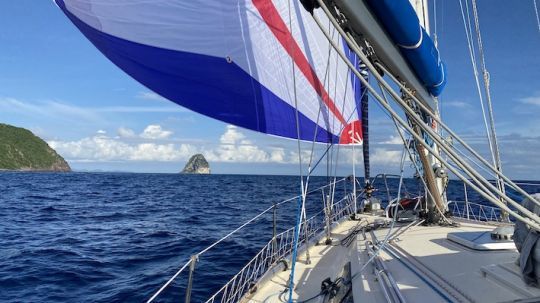
In 2020, he sets course for the Atlantic again, but further south, via the Azores. After reaching Cape Verde, it reaches Brazil. The ascent and discovery of the Amazon are cancelled for safety reasons. After French Guiana, he returns to Trinidad and the Caribbean, before planning to return to mainland France next summer.
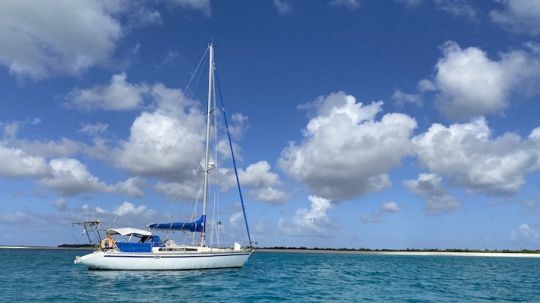
After several thousand miles, Pierre has always felt confident aboard his Sun Fizz, which has exemplary handling. The design faults listed above have been ironed out by the various phases of work. The main defect that cannot be corrected is the lack of fluidity in the small aft skirt, compared with more modern designs.
But that didn't stop Pierre from taking on a new 4-legged partner to complete his 2 e around the Atlantic aboard Areiti.

 /
/ 